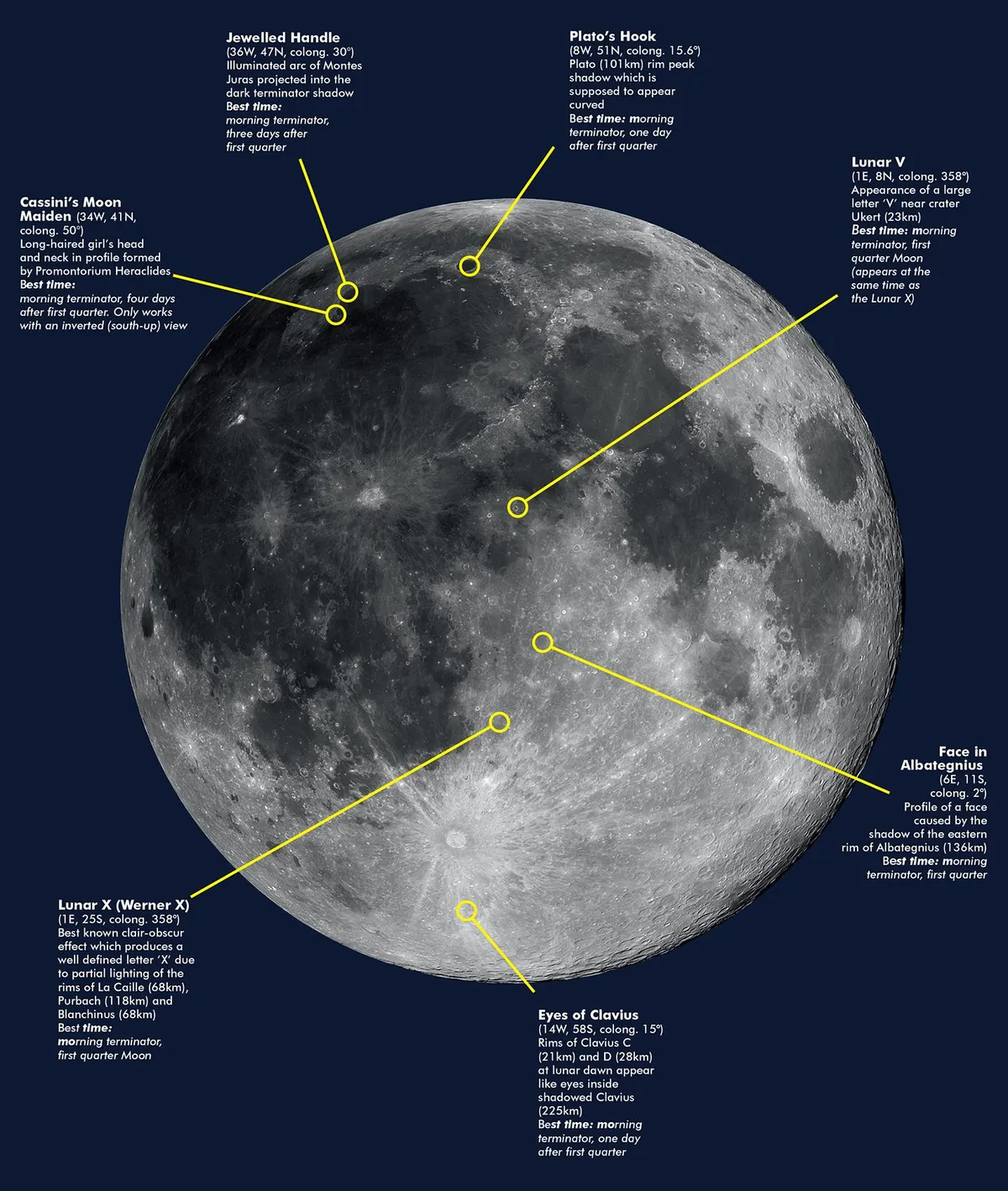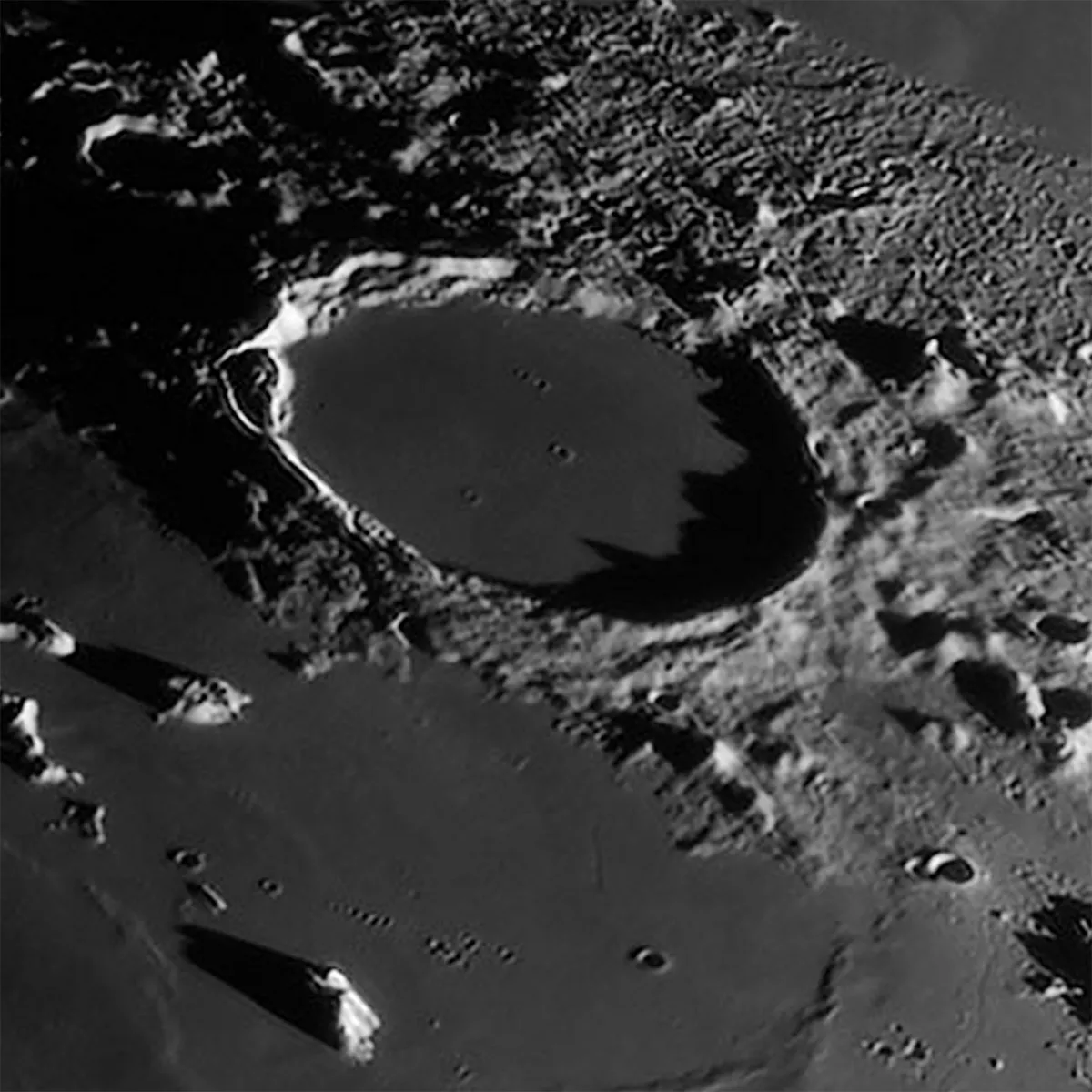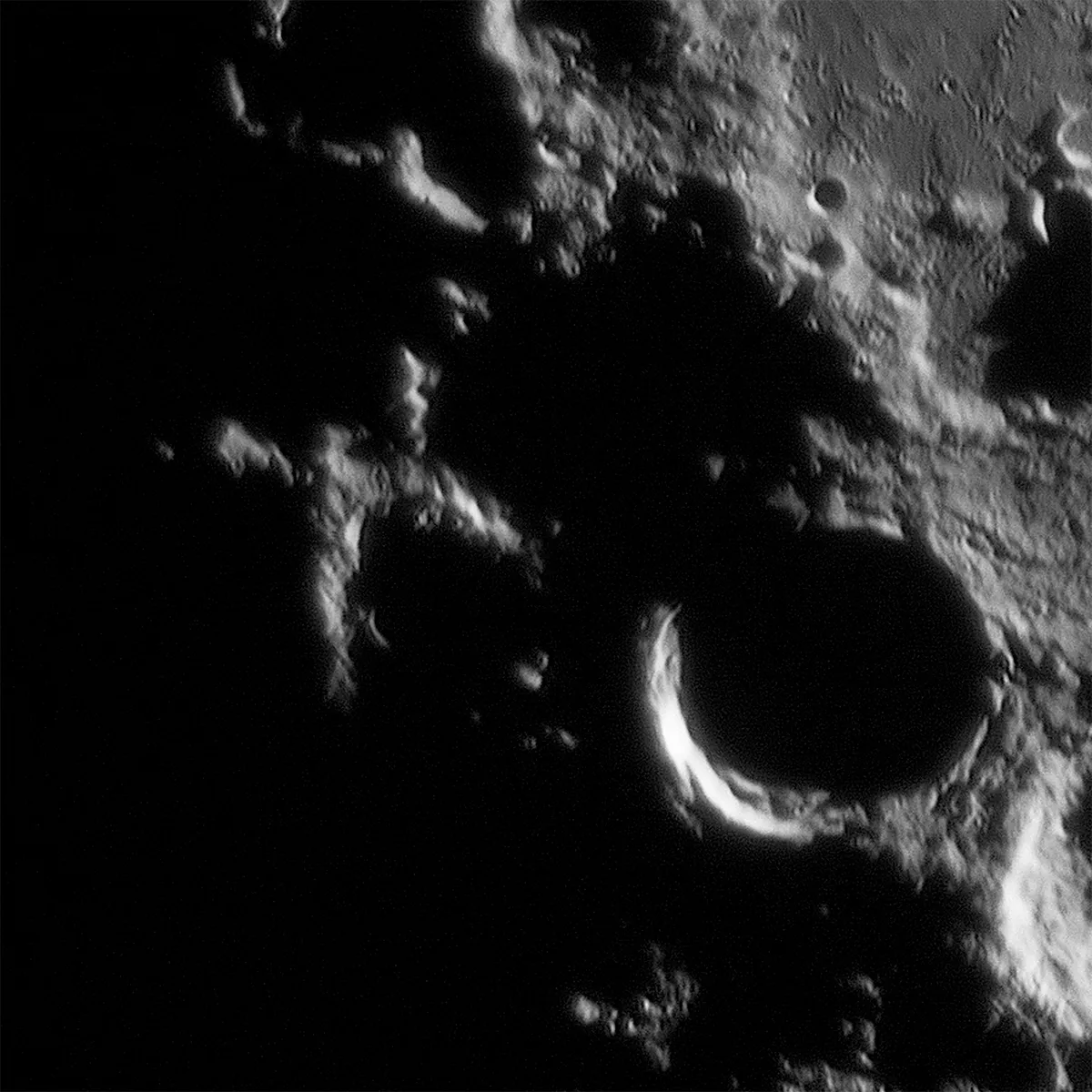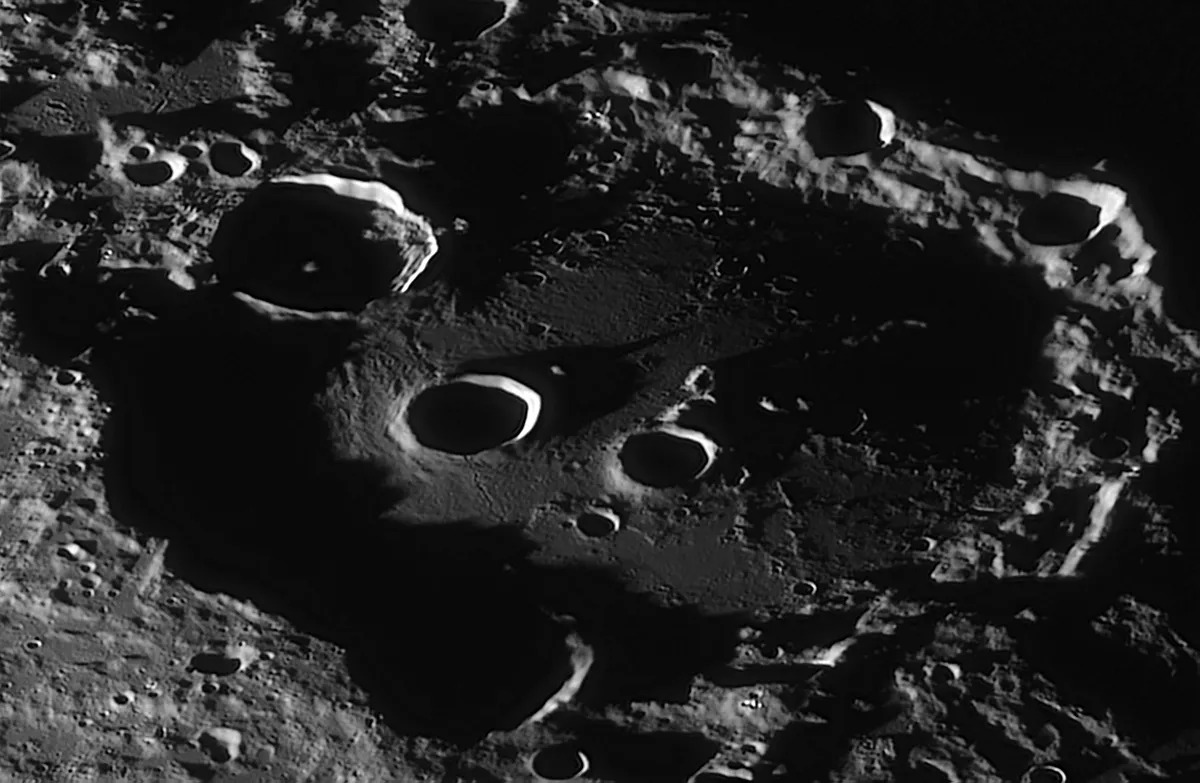There are many clair-obscur effects visible on the Moon. These lunar illusions are a play of shadow and sunlight interacting with craters and other features, making them appear as something familiar through the eyepiece. Examples of famous clair-obscur effects include the Lunar X and V, which create giant floating letters on the lunar terminator near first quarter.
With such a variety, hunting down clair-obscur effects adds a new dimension to lunar discovery, especially for youngsters.
Most clair obscur effects require specific timing. Some last for days and are easy to see. Others last for a few hours and are more challenging.
For more info, read our guide to the phases of the Moon or discover the science behind a supermoon.
You can also get regular updates on the lunar phases delivered straight to your email inbox by signing up to the BBC Sky at Night Magazine newsletter.

In order to see short-lived clair obscur effects, the terminator must be positioned correctly when the Moon is above the horizon. The weather needs to be clear too.
The terminator position is given by a value known as selenographic colongitude, defining the location of the morning terminator in degrees west of the Moon’s prime meridian.
The values are 0˚ at first quarter, 90˚ at full Moon, 180˚ at last quarter and 270˚ at new Moon.
Below are 7 of the best clair-obscur effects on the Moon. See how many you can spot! And if you want to capture an image of these strange effects, read our guide on how to photograph the Moon.
1
Plato’s Hook

Plato’s Hook (colongitude 15.6˚) is a curiosity. It's caused when rim shadows inside crater Plato (101km) appear to cast a curving, hook shadow where you’d expect the shadow edges to be straight.
How to find it 8˚W, 51˚N, colongitude 15.6˚
Best time to see Morning terminator, one day after first quarter
2
Jewelled Handle

The Jewelled Handle occurs when peaks of the semi-circular Jura mountain range catch the lunar dawn’s light. The illuminated arc of Montes Jura is projected into the dark terminator shadow.
How to find it 36˚W, 47˚N, colongitude 30˚
Best time to see Morning terminator, three days after first quarter
3
Cassini’s Moon Maiden

This effect creates the appearance of a long-haired girl’s head and neck in profile formed by Promontorium Heraclides. Can you spot the Moon Maiden?
How to find it 34˚W, 41˚N, colong. 50˚
Best time to see Morning terminator, four days after first quarter. Only works with an inverted (south-up) view, as in the image above.
4
Lunar V

Look for the appearance of a large letter V near crater Ukert (23km), and you can tick the Lunar V off your clair-obscur checklist.
How to find it 1˚E, 8˚N, colong. 358˚
Best time to see morning terminator, first quarter Moon (appears at the same time as the Lunar X)
5
Lunar X

The best-known clair-obscur effect, which produces a well-defined letter X due to the partial lighting of the rims of La Caille (68km), Purbach (118km) and Blanchinus (68km).
How to find it 1˚E, 25˚S, colong. 358°
Best time to see Morning terminator, first quarter Moon
6
Eyes of Clavius

The Eyes of Clavius (colongitude 15˚) occurs when the rims of Clavius C and D become illuminated by the lunar dawn, before the floor of the giant crater Clavius in which they sit. Rims of Clavius C (21km) and D (28km) at lunar dawn appear like eyes inside shadowed Clavius (225km).
For help with this one, read our guide on how to see crater Clavius on the Moon.
How to find it 14˚W, 58˚S, colongitude 15˚
Best time to see Morning terminator, one day after first quarter
7
Face in Albategnius

The appearance of the profile of a face is caused by the shadow of the easternrim of Albategnius (136km).
How to find it 6˚E, 11˚S, colongitude 2˚
Best time to seemorning terminator, first quarter
See if you can spot all of these clair obscur effects for yourself. In doing so, you'll become more in tune with the lunar feature and also how the phases of the Moon progress over time.
If you do manage to see them all, or want to shout about your favourite lunar feature, get in touch with us by emailing contactus@skyatnightmagazine.com or via Facebook, Twitter and Instagram.
Pete Lawrence is an experienced lunar observer and a co-host of The Sky at Night. This guide originally appeared in the February 2020 issue of BBC Sky at Night Magazine.

